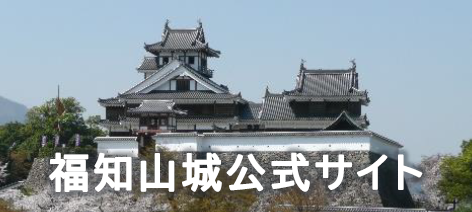本文
フクレル展示説明(英語)
Fukuchiyama Railway Museum "FUKURAIL" Explanation of Exhibits
The explanatory text in English was created in collaboration with The University of Fukuchiyama.
この解説文(英訳)は福知山公立大学との連携により作成しました。
【Translator/翻訳者】
Kazuhiro Shiomi: Professor, The University of Fukuchiyama / 福知山公立大学 特命教授 塩見和広
Anthony Walsh: Assosiate Professor, The University of Fukuchiyama / 福知山公立大学 準教授 Anthony Walsh
Varuna Desilva: Assistant Language Teacher, Hyogo Prefectural Kaibara High School / 兵庫県立柏原高等学校 ALT Varuna Desilva
【Table of Contents/目次】
1_C5793 Steam Locomotive with Third Driving Wheel
2_Welcome to “Fukurail”, the Fukuchiyama Railway Museum.
3_The Railway Town, Fukuchiyama
4_Expansion of the Railway Network
5_Locomotives that ran in Fukuchiyama
6_Attracting a Railway Bureau and Revitalizing the Town
7_Nostalgic Hokutan Railway
8_The New and Old Fukuchiyama Station Building’s Trip-Through-Time Diorama
9_Ticket Closure System
10_Fukurail Collection
11_Role Play as a Locomotive Assistant!
12_Let’s Ride the Fukurail Train Through Town!
1_C5793 Steam Locomotive with Third Driving Wheel
The C5793 Steam Locomotive with third driving wheel operated on the Fukuchiyama Line and Sanin Main Line from 1949 (Showa 24) to 1973 (Showa 48). This locomotive began its operation for passengers in 1939 (Showa 14) as the 93rd type C57 to be manufactured. It traveled through Nagoya and the Kanto regions before actively servicing both Fukuchiyama and Toyōka after the war. The device that rotates under power to propel the locomotive forward is called the “box driving wheel”. After 1936 (Showa 11), locomotives adopted American-style box driving wheels instead of the previous spoked wheels. The size and number of driving wheels on steam locomotives differ between passenger and freight trains. Passenger locomotives have three pairs of large driving wheels, emphasizing speed, while freight locomotives have four pairs of small driving wheels, prioritizing traction.
2_Welcome to “Fukurail”, the Fukuchiyama Railway Museum.
Fukuchiyama has long been a vital transportation hub, with the development of water transport along the Yura River and various intersecting highways. As the main railway lines flourished, it became widely known as the “Railway Town”. In 1998 (Heisei 10), “Fukuchiyama Railway Museum Poppoland” was opened to convey this history. The “Railway Town’s” museum was beloved by a diverse audience. However, due to the aging of the building and other factors, it closed its doors in 2018 (Heisei 30), much to the regret of many of its admirers.
In response to a civic petition urging for the revival of Poppoland, and with a generous donation from the philanthropist Mr. Asada, the Fukuchiyama Railway Museum “Fukurail” was reestablished. Intending to inherit the history and identity of Fukuchiyama City which had developed alongside the railways, and promote tourism and regional revitalization, the facility reopened in August 2023 (Reiwa 5). It is intended to be a place where people can visit and enjoy themselves.
3_The Railway Town, Fukuchiyama
Fukuchiyama, a town rich in history and heritage as a transportation hub, has been instrumental in carrying passengers, goods, culture, and information while enhancing the lives of people and the economy. Since the Edo period, Fukuchiyama has been supported by local roads and the Yura River. These connections were vital in bridging the Kyoto, Osaka, and Kobe metropolitan areas with the Northern Kinki region. In the late Meiji era, the introduction of railways between Osaka, Kyoto, and Fukuchiyama marked a significant shift from roads to rail transport. Fukuchiyama, a unique local rail-hub, gained nationwide fame as a “Railway Town”.
The railway supported the town’s development as well as people’s lives, snowballing further as it established its role as a transportation hub. Enjoy exploring the Fukuchiyama Railway Museum while experiencing the historic elements of this railway town.
4_Expansion of the Railway Network
How far-reaching are the railway lines extending from Fukuchiyama? Over time, amidst various advances in modes of transportation, railways have expanded greatly. This has aided the lives of people of all ages as an easily accessible means of transport. Today, Fukuchiyama continues to support the community as a railway town.
5_Locomotives that ran in Fukuchiyama
Various types of locomotives ran in Fukuchiyama from the Meiji to the Showa era. Steam locomotives were first introduced in Fukuchiyama in 1899 (Meiji 32) when the Hankaku Railway opened. They initially served as the main locomotives, excelling in pulling heavy freight and had many carriages. These locomotives have existed as part of the town’s history and are a familiar representation of its identity.
Here, we will introduce some of these locomotives.
6_Attracting a Railway Bureau and Revitalizing the Town
One of the reasons Fukuchiyama is known as a “Railway Town” is the establishment of the Fukuchiyama Railway Bureau after World War II. Only three of the twenty-seven railway bureaus nationwide were in the Kinki region: Osaka, Tennoji, and Fukuchiyama. Its placement in the provincial city of Fukuchiyama was an exceptional event. The city, involving neighboring municipalities, campaigned for and successfully established a new bureau. The city was restructured to support the railway which enriched the lives of its citizens while boosting the economy, creating a strong bond between the railway and the community.
7_Nostalgic Hokutan Railway
The railway connecting Fukuchiyama to Miyazu has a long history, starting with the campaign for the Fukuchiyama–Miyazu railway by investors. When the Hokutan Railway opened, it connected Fukuchiyama to Kawamori city. But due to having difficulties, the section between Kawamori and Miyazu was abandoned. ApproximaTely one hundred years later, the Miyafuku Line opened, finally realizing its initial vision. The Hokutan Railway supported the lives and economy of the people along its route for approximaTely fifty years.
When discussing the Miyafuku Line today, one cannot forget the history of the Hokutan Railway, which laid its foundation.
8_The New and Old Fukuchiyama Station Building’s Trip-Through-Time Diorama
This diorama represents the old and new arrangements of Fukuchiyama station. By creatively separating its original from its present state, scenes of surroundings that might have existed in the past are imaginatively assembled for all to enjoy. Enjoy the feeling of traveling through time and space, in sync with the movement of the trains.
The New Station Building Era
Over approximaTely 34 years, Fukuchiyama Station underwent a major transformation. In 2005 (Heisei 17) the new station building was completed. As the prevalence of automobiles increased, the level crossing of the old station building connecting the north to the south gave rise to heavy traffic congestion issues. To resolve this problem, the Kyoto Prefectural office and the city office collaborated to extensively renovate the station building, welcoming people through a new entranceway.
The Old Station Building Era
In 1954 (Showa 29), Fukuchiyama Station was reborn into a modern station building to enhance its convenience as a key point of transportation. The large Fukuchiyama locomotive depot served as a vehicle base where various steam locomotives returned to. Unique scenes of the “Railway Town”, such as level crossings and underpasses, remain vivid in the memories of the people of that time.
9_Ticket Closure System
In the railway industry, a term called “closure” has been used since antiquity. “Closure” is a method of preventing railway incidents by only allowing one train to occupy a specific section of the track at any time. The ticket closure system equips the train driver with a ticket, or “tablet”. This mechanism was used as a means of verification, where only the train carrying a specific tablet can travel on the designated section. It enables communication within the section be confirming the insertion and removal of the tablet (ticket). Although the use of the ticket closure system has decreased with the adoption of automatic systems, the concept of “closure” to ensure safety remains unchanged to this day.
10_Fukurail Collection
Since the opening of the former Fukuchiyama Railway Museum Poppoland in 1998 (Heisei 10), our facility has received various rail-related materials. This was primarily through donations received from railway professionals. The Fukurail Collection features a selection of materials from various sources, which are currently on display.
11_Role Play as a Locomotive Assistant!
An assistant works with the engineer to operate the steam locomotive. Using a shovel to throw coal into the firebox and heating water in the boiler to generate steam, the locomotive assistant is responsible for creating energy for the steam locomotive. Try role-playing as a locomotive assistant and see if you can get the traditional steam train running!
12_Let’s Ride the Fukurail Train Through Town!
Various measures are in place so that the trains can run safely through the town. The Fukuchiyama train driver operates these trains by manipulating various mechanics. Take on the challenge of driving in a simulated train based on the section of track from Isa Station to Fukuchiyama Station!





